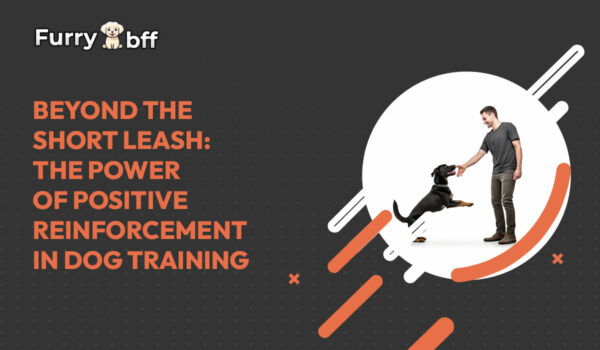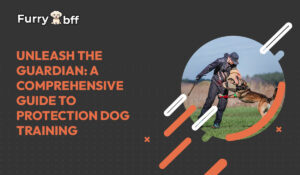As owners, we all desire our furry companions to be well-behaved and obedient. The go-to method for achieving this has been using a leash for years. However, is there another way? In this blog post, we’ll explore an approach to dog training that has gained popularity recently: reinforcement. From teaching commands to complex behaviors, we’ll discover how this approach can be practical, kinder, and more rewarding for you and your furry friend.
Definition of Positive Reinforcement
Positive reinforcement is a training technique that involves rewarding behavior to increase the likelihood of it being repeated in the future. It is a principle in behavior psychology. It has wide application in dog training and other animals and even humans. Positive reinforcement emphasizes providing something after the desired behavior occurs, making it more likely to happen again.
Let’s break down the elements of reinforcement;
Behavior
Positive reinforcement starts with identifying a behavior you wish to encourage or reinforce in your dog. This could range from following commands like sitting on order or walking calmly on a leash.
Reward
A reward is something that your furry friend finds valuable and enjoyable. Common tips include treats, kind words, gentle pets, fun toys, and playful moments. The prize serves as an outcome for the behavior you desire to see.
Timing plays a role in reinforcement. Delivering the reward promptly after your dog displays the desired behavior is essential so they can easily connect it with the prize. This helps reinforce the link between the two.
By pairing the reward with the desired behavior, your dog learns that performing that behavior leads to an outcome. This connection becomes more muscular over time. Encourages them to repeat the behavior often.
The main goal of reinforcement is to increase how frequently your dog engages in the desired behavior. By rewarding their actions, you are making it more likely that they will automatically offer those behaviors in anticipation of receiving a reward.
For instance, you’re teaching your dog to sit on command. Whenever your furry companion sits as you give them this instruction, you immediately provide them with a treat. Praise their efforts. As time passes, they learn that sitting earns them treats and praise, making them more inclined to sit when you give them this command again.
Positive reinforcement is an effective training method that focuses on establishing a connection with desired behaviors. It promotes learning through motivation and fosters trust between you and your canine companion. You can create a successful training experience for yourself and your furry friend by utilizing rewards to highlight desired behaviors.
Change in Training Approach
The “change in training approach” refers to a shift or transition from harsh training methods towards positive and ethical techniques. This shift involves moving from punishment, fear, or physical control methods. Instead, it emphasizes positive reinforcement, cooperation, and understanding of the natural behaviors and motivations of the trained animal.
Here are key aspects related to the change in training approach;
1. Greater Focus on Positive Reinforcement:
The shift entails increasing emphasis on reinforcement techniques that reward desired behaviors rather than punish undesired ones.
2. Cooperation Takes Priority over Control:
Rather than controlling a dog’s behavior through force or physical restraints, The new approach prioritizes building cooperation and fostering trust between the handler and the dog.
3. Understanding Dog Behavior:
The latest approach acknowledges the importance of comprehending a dog’s instincts, requirements, and ways of communication. This understanding enables trainers and owners to collaborate with the dog’s inclinations rather than working against them.
4. Focus on Motivation;
The shift recognizes that incentives drive dogs and that these rewards can be utilized to reinforce behaviors. Motivation becomes an element in achieving training outcomes.
5. Ethical Treatment:
The new approach emphasizes treating dogs with dignity and empathy, avoiding punishments or methods that instill fear, pain, or distress.
6. Establishing Trust;
The change in approach aims to foster a trusting and cooperative relationship between the dog and their handler. This trust enhances communication and receptiveness during training sessions.
7. Long-Term Behavior Modification:
Instead of relying on short-term solutions, the shift prioritizes creating enduring behavior changes through reinforcement techniques.
8. Tailoring to Individual Dogs:
The latest approach acknowledges that each dog possesses characteristics necessitating customized training methods that suit their temperament, learning style, and specific needs.
9. Foundation, in Behavioral Science:
The new training approach aligns with the principles of science, understanding that rewarded behaviors are more likely to be repeated. This method utilizes the science of learning theory, recognizing that animals, including dogs, learn best through associations. Training sessions not only serve as a way to strengthen the bond between you and your dog but also provide stimulation and enrichment opportunities.
Overall, this shift in training approach represents a compassionate way of working with dogs. It reflects an increasing awareness of the benefits of reinforcement in achieving desired behaviors and promoting our furry friends’ overall well-being and happiness.
There are advantages to utilizing reinforcement techniques in dog training:
1. Encourages a Positive Learning Environment:
Positive reinforcement focuses on rewarding desired behaviors, creating an environment where your dog is motivated to learn and actively engage with you.
2. Strengthens the bond between humans and dogs:
Using reinforcement techniques can help trust and cooperation, leading to a stronger and more harmonious relationship between you and your furry friend.
3. Increases eagerness to learn:
When dogs associate training sessions with rewards, they are more likely to participate and engage in learning.
4. Encourages desired behaviors:
By rewarding behaviors you want to see more of, you increase the likelihood of those behaviors being repeated.
5. Reduces stress and fear:
Opting for reinforcement methods avoids measures that can reduce your dog’s stress levels, fear, and anxiety during training sessions.
6. Builds confidence:
Achieving success through rewards helps boost your dog’s confidence, motivating them to attempt behaviors and overcome challenges.
7. Focuses on outcomes:
Positive reinforcement emphasizes acknowledging what your dog is doing right rather than solely focusing on mistakes or undesirable behaviors.
8. Results that stand the test of time:
Behaviors learned through reinforcement tend to be more enduring because they are associated with experiences.
9. Enhances problem-solving abilities:
Through reinforcement training, dogs develop thinking skills and make associations that improve their problem-solving and adaptability.
For all dogs, positive reinforcement is practical and adaptable. It works well for dogs of any age, size, or breed, accommodating learning styles and temperaments. One of its benefits is that it promotes training by avoiding pain, fear, or intimidation.
With reinforcement, dogs become learners who eagerly anticipate training sessions as enjoyable opportunities for rewards and fun. As their positive behaviors are consistently reinforced, unwanted behaviors often diminish because they learn what is expected.
Another advantage of reinforcement is its versatility and adaptability. It can be applied to training scenarios and goals – from teaching commands to mastering complex tricks.
Moreover, engaging in reinforcement training provides stimulation for your dog. This mental challenge contributes to their well-being. Enhances their cognitive abilities.
Incorporating reinforcement into your dog training approach leads to well-behaved dogs and strengthens the emotional connection you share with them. By focusing on creating experiences, you foster a cooperative learning environment that benefits both you and your canine companion.
It’s important to note that positive reinforcement isn’t limited to obedience training. It can also be effectively applied to more complex behaviors like leash training.
Of using a leash to control your dog physically, positive reinforcement involves teaching them to walk on a loose leash and rewarding them when they do so. For example, you can. Wait whenever they pull and then resume walking once they give some slack. As they realize that stretching won’t get them what they want but walking on a loose leash, their behavior will adjust accordingly.
It’s important to note that positive reinforcement requires patience and consistency. Unlike using force with a leash, positive reinforcement takes time and effort. However, the benefit is its approach and the potential to strengthen the bond between you and your dog. When dogs learn that good behavior leads to praise, treats, or toys, they become more motivated to please you.
In conclusion
Overall, the short leash has been widely used in dog training because it can be effective. However, dog owners should explore all training methods for their furry friends. Positive reinforcement may demand effort. It is kinder, more efficient, and ultimately more rewarding for you and your pup. So why not give it a try? You could uncover a connection and companionship level with your furry friend.









